|
|
 |
In this series, I will not repeat the information that is already available on how superchargers work, but instead focus on their selection, installation, use and tuning on older motorcycle engines. Here I will make various observations and comments on function, and in some cases how to make improvements. New material will be added regularly, and eventually better organized. Click below to jump directly to an individual topic. |
Supercharger Topics | |
Function |
|
|
|
|
|
|
|
|
History
Eaton is the largest OEM supercharger manufacturer in the world, producing application-specific units for Aston Martin, Buick Park Avenue Ultra, Riviera and Regal GS, Ford Thunderbird Coupe, Mercury Cougar XR-7, Jaguar, Mercedes, Mini Cooper, Oldmobile Eighty-Eight and Ninety-six, Pontiac Grand Prix GTP and Bonneville, Volkswagen, &c. since 1989. Eaton does not sell these to the public, but new generic (non application-specific) units are available from Magnuson. |
 | |
From Eaton’s sales literature: “Eaton Superchargers will work effectively in any orientation (flat, upside down, on edge). Cavities are also positioned in the supercharger’s cast aluminum housing to quiet induction noise. These extruded-aluminum rotors are powder-coated with epoxy for lifetime durability (author’s note: the earliest rotors were not coated; the most modern rotors have an abradable coating which wears in). Since the rotors seal without contact, there is no chance for wear in normal service. An axial entry port at the rear of the housing and a bottom exit port are carefully configured to hush the siren sound with no loss of flow capacity. Sealed lubricant reservoirs at both ends of the supercharger provide lifetime maintenance-free reliability. During idle and cruise operation, a valve controlled by the powertrain computer bypasses intake air around the supercharger to minimize drag.”
Function
Generically known as “roots type”, these superchargers have two parallel intermeshed rotors turning in opposite directions. The rotors are radially and laterally symmetrical, but are “handed” mirror images of each other and helix clockwise and counter-clockwise. The rotor-to-rotor clearance is just sufficient to prevent contact. The rotors each have three lobes, and are driven by counter-rotating gears inside the front housing. Since both drive gears always have the same number of teeth the two rotors always turn at the same speed, which is also the speed of the the shaft and pulley. Changing the gear tooth count &c. does not affect the supercharger speed or capacity.
The drive ratio, or RPM differential between the engine and the supercharger, varies between roughly engine speed (1:1) and highly over-driven (4:1), depending on the exact model and application (except as noted), and always limited by Eaton’s rather high maximum RPM limit. This limit is possible because helixed rotors have inherently greater bending resistance than straight rotors, and that intake manifold pressure develops more gradually.
The drive is by serpentine or multi-ribbed belt, similar to the accessory drive on most modern automobiles. Both 6 rib and 8 rib belts are used.
All Eatons are “dry”, and designed for use with EFI. Draw-through installations, where fuel will be present inside the supercharger, are deprecated by Eaton (and their service agent Magnuson), and are inherently dangerous as a source of explosion. In addition, the fuel will slowly leach lubricant from the bearings, and dissolve the rotor coating used on many models. Since the OEM throttle body is located at the intake port, vacuum is partially present at all times, and the bearings are sealed (unlike some turbochargers).
Eatons are supplied to OEM automobile manufacturers in six sizes; click here for the Tables:  . . |
The flow path
All Eaton superchargers have their inlet port axially located (parallel to the rotor axis) on the end opposite the drive gears. Air flows from the intake port at the end of the rotors, divides into two streams which are captured between each rotor lobe and the housing’s inner surface forming a captured volume which travels around the inner case wall, and is then forced into the discharge port, as shown. This port may be “clocked” to be at the top, bottom, or either side depending on the orientation of the housing, but the discharge is at 90° to the intake port.
The Eaton M-Series rotors’s three lobes are partially rotated by 60° along their length; Eaton refers to this as the “twist angle” (not the helix angle). This is not the “pitch” as found in dimensions of propellors and fans since the Eaton’s actual pitch is not the twist angle, but the number of turns the rotor makes in a fixed distance. The rotors in an M90 are twice as long as those in an M45 but rotate the same 60° from end to end, so the pitch of the M45 is twice as “coarse” (aggressive).
The twist (which is not unique to the Eaton) smooths discharge pressure build-up and air flow by exhausting into the engine’s intake manifold almost continuously, which is a major improvement over the older, traditional straight rotor design, which delivers the charge in pulses every 120° as each of the three lobes lobe in turn is exposed to the discharge port (some roots types only have two rotors; obviously these discharge at 180° intervals).
There is no high internal compression as found in the twin screw design. The intake charge is not compressed except by resistance (if and when it occurs) in the engine’s intake manifold (exceptions: the newest “TVS”, and to a lesser extent the current Generation V· produce some internal compression by centrifugal force, not mechanically), therefore in the strictest sense the M Series are not true superchargers but blowers or air volume transfer devices. Air is only moved from the inlet port to the discharge port. Compression only takes place in the engine’s intake manifold as the incoming charge “backs up” if, and only if, there is sufficient density already present to provide resistance.
A small supercharger will not keep up with engine demand, and actually form a restriction, yielding vacuum at high RPM rather than boost.
In crude terms, the supercharger’s minimum capacity should be engine displacement ÷ 2 if their relative speed is unity (1:1). If the supercharger is smaller it must turn faster, and conversely if larger may turn slower. Volumetric efficiency lower than 100 reduces the pumping requirement, of course.
E.g., an M90 supplying 90” to a 180” engine at 1:1 will (in theory) develop 1 bar (only atmospheric pressure, no boost), since the supercharger output is about the same as the engine's input. If the supercharger were turning 2:1 (or the engine were 90”) you would get 2 bar (boost = atmospheric pressure, 14.7 psi at 0 elevation) etc.
10 psi is about .68 bar, so to supply a 3.8 liter engine (231”) at 10 psi an M90 would be turning about 2.1:1. |
Internal construction
The driven end is composed of a detachable cover containing the roller bearings which support the rotor shafts and drive pulley. Next inboard of this is an intermediate cover, shown right, which carries the coupling, gears and bearings to support this end of the rotor shafts. Caged needle rollers in the intake end of the main body casting support the other ends of the rotor shafts. The pulley, drive gears, and rotors are an interference (press) fit on the shafts and not easily removed without the proper fixture. |  |
|
The drive coupling is plastic, and is transected by six evenly spaced holes. Three holes 120° apart accept dowel pins from the drive gear, and the alternate three holes 120° apart accept dowel pins from the driven rotor on the opposite side. The material provides some vibration and shock damping. Click on the picture for a larger view. |
See these Victory Library booklets |
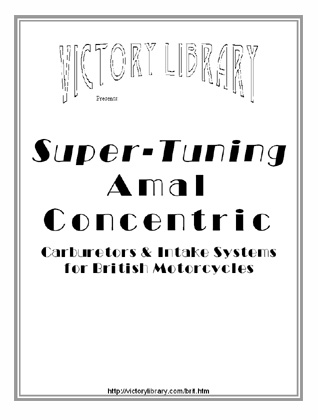
|

|

|

|
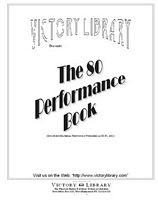
|
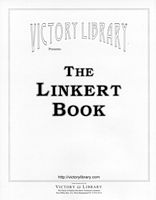
|
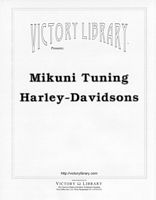
|

|

|

|
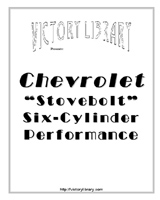
|
|



